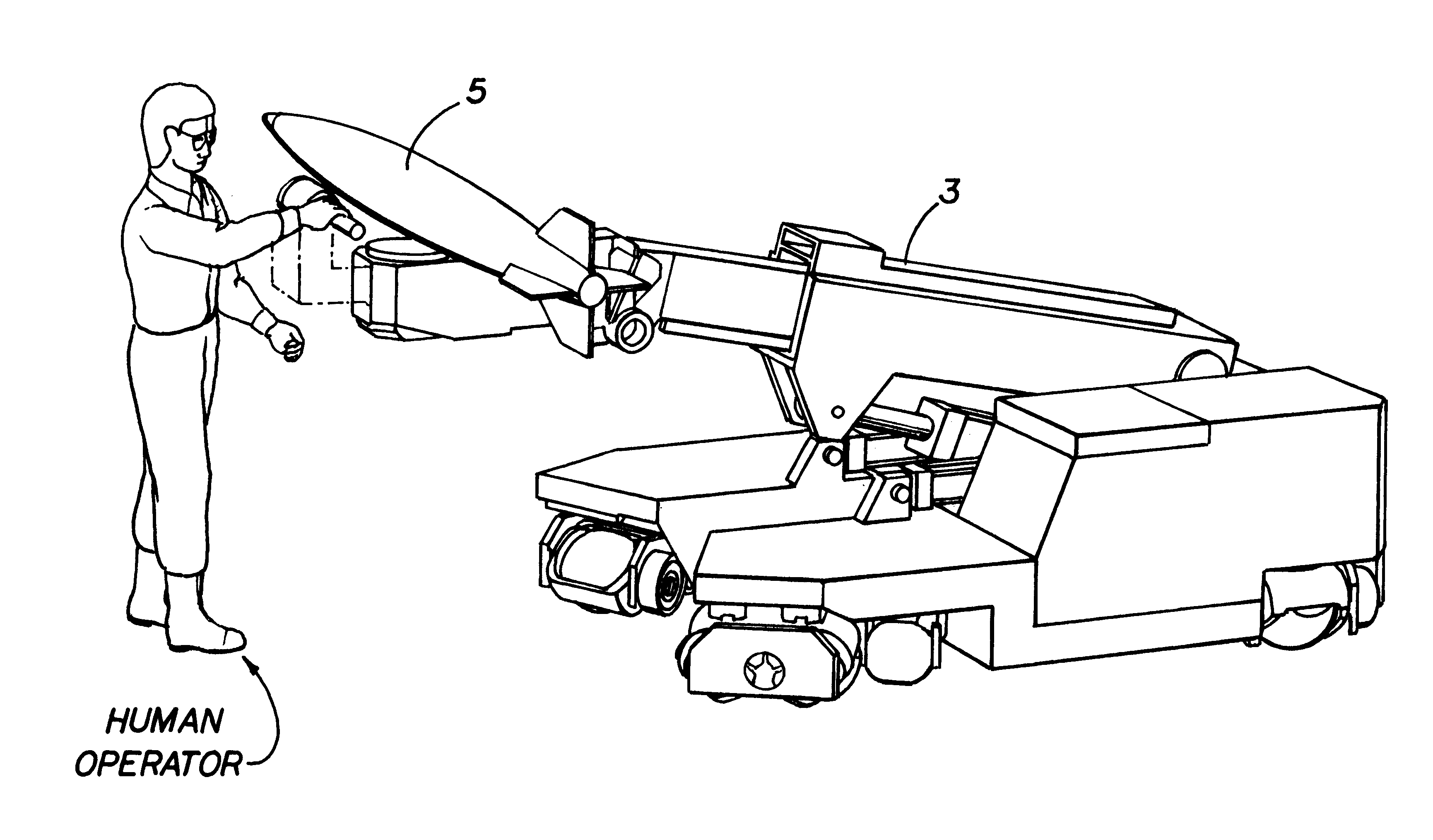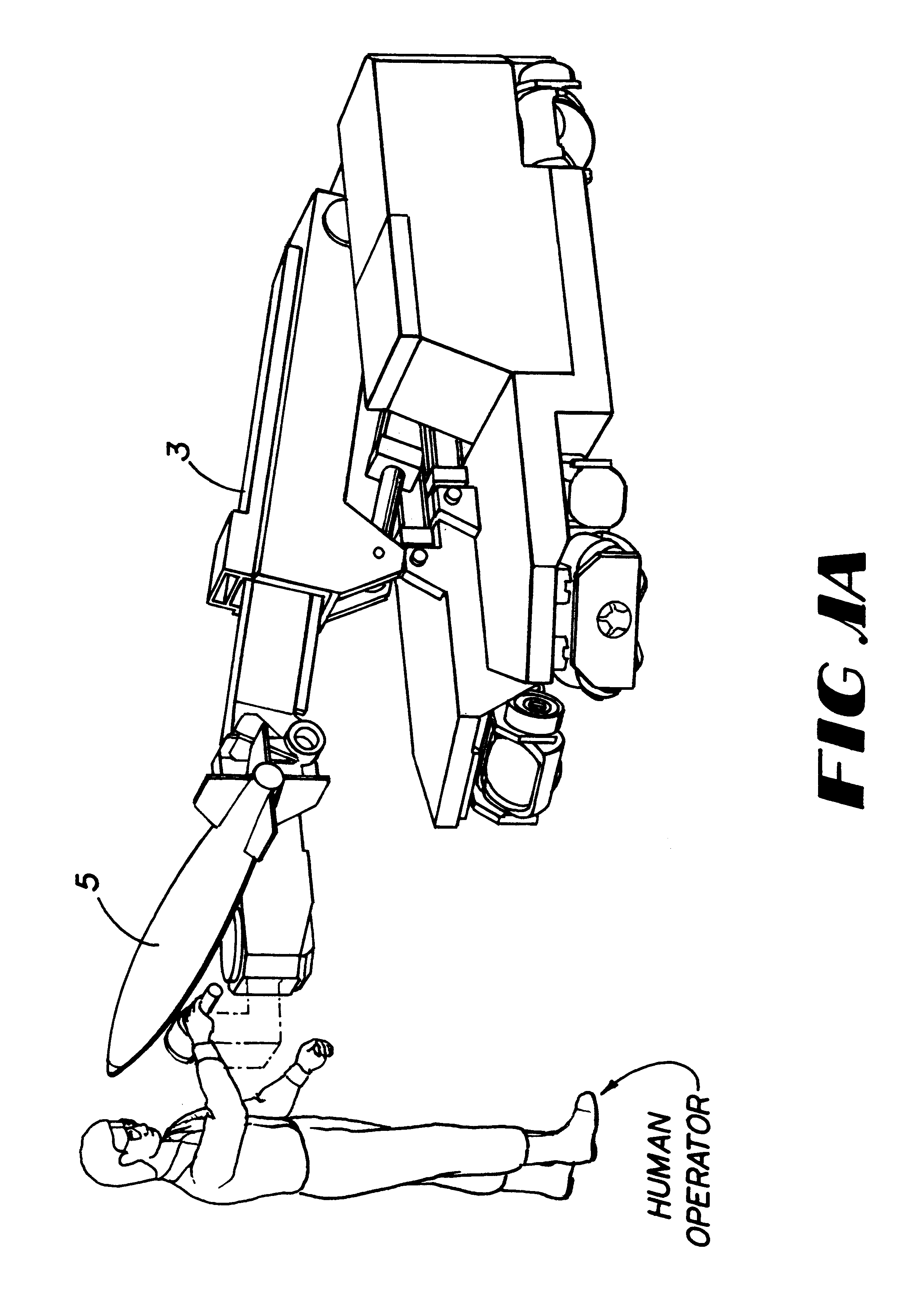Apparatus and methods for a human extender
a human extender and apparatus technology, applied in the field of apparatus and methods for human extenders, can solve the problems of a significant computational burden on the controller, the inability to best perform tasks by a traditional robot manipulator, and the availability of human amplifier systems
- Summary
- Abstract
- Description
- Claims
- Application Information
AI Technical Summary
Problems solved by technology
Method used
Image
Examples
Embodiment Construction
Shown in FIG. 5
Two transfer functions can be obtained from FIG. 5. The first is the transfer function from the force at the hand, F.sub.hand, to the actuator velocity , y, with the external force due to the contact, F'.sub.ext, set to zero
.sup.y T.sub.F.sub..sup.hand =[K.sub.amp K.sub.cli G.sub.comp (K.sub.q / A)] / [s(s.sup.2 / .omega..sub.h.sup.2 +2s.xi..sub.eq / .omega..sub.h +1)+MK.sub.cli G.sub.comp (K.sub.q / A)(s+a.sub.v)] (1)
with the assumptions that the load will be a constant load and not a spring type load (i.e., .omega..sub.ext =0). The second transfer function is the one that relates the external force due to contact , F'.sub.ext, to actuator velocity, y, with the force at the hand, F.sub.hand, set to zero
.sup.y T.sub.F'.sub..sup.ext =(-1 / M)[s(s.sup.2 / .omega..sub.h.sup.2 +2s.xi..sub.eq / .omega..sub.h +MK.sub.cli G.sub.comp (K.sub.q / A)] / [s(s.sup.2 / .omega..sub.h.sup.2 +2s.xi..sub.eq / .omega..sub.h +1)+MK.sub.cli G.sub.comp (K.sub.q / A)(s+a.sub.v)] (2)
with the assumption that...
PUM
| Property | Measurement | Unit |
|---|---|---|
| forces | aaaaa | aaaaa |
| force | aaaaa | aaaaa |
| contact force | aaaaa | aaaaa |
Abstract
Description
Claims
Application Information
 Login to View More
Login to View More - R&D
- Intellectual Property
- Life Sciences
- Materials
- Tech Scout
- Unparalleled Data Quality
- Higher Quality Content
- 60% Fewer Hallucinations
Browse by: Latest US Patents, China's latest patents, Technical Efficacy Thesaurus, Application Domain, Technology Topic, Popular Technical Reports.
© 2025 PatSnap. All rights reserved.Legal|Privacy policy|Modern Slavery Act Transparency Statement|Sitemap|About US| Contact US: help@patsnap.com



